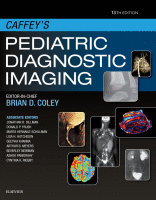Physical Address
304 North Cardinal St.
Dorchester Center, MA 02124

The pediatric duodenum, jejunum, and ileum are subject to a range of acquired pathologies. In this chapter, the etiology, pathophysiology, and clinical manifestations of small bowel obstruction (SBO), infectious and noninfectious inflammatory bowel disease (IBD), and intestinal infiltrative and neoplastic…

Acquired duodenal abnormalities can be generalized into conditions that cause obstruction, inflammation, and neoplasia. Abnormalities That Result in Duodenal Obstruction Superior Mesenteric Artery Syndrome Overview. First described at autopsy by von Rokitansky in 1861, the term superior mesenteric artery or…

Part I: Duodenum Congenital anomalies of the duodenum often present with obstructive symptoms and consist of intrinsic obstructing lesions, such as duodenal atresia and stenosis, or extrinsic lesions that affect the duodenum, such as midgut volvulus or Ladd bands, annular…

Overview Acquired disorders of the stomach in children are uncommon and may be the result of an underlying congenital predisposition, such as gastric volvulus; an inflammatory process, such as peptic ulcer disease (PUD); or a neoplastic or neoplastic-like condition. In…

Overview Hypertrophic pyloric stenosis (HPS) is the most common urgent surgical entity affecting infants during the first 6 months of life. Incorrectly assumed to be congenital by Hirschsprung in his seminal postmortem description in two patients, empirical data indicate that…

Congenital abnormalities of the stomach, and those manifested in the neonatal period, are uncommon and include such entities as duplication cysts, diverticula, microgastria, and anomalies involving the antropyloric region. Gastric Duplication Cyst Overview. Duplication cysts may occur anywhere along the…

Overview The esophagus is a muscular tube that transports food and oral secretions from the mouth to the stomach via coordinated peristalsis of striated and smooth muscle. Acquired abnormalities of the esophagus can be separated into several broad categories: gastroesophageal…

Overview Swallowing, the coordinated movement of liquids, purees, and/or solids, is a complex sensorimotor process that depends on integrated information from multiple levels of the central and peripheral nervous system. It involves complex excitatory and inhibitory signals from multiple regions…

Overview Severe congenital esophageal malformations, such as esophageal atresia, are usually diagnosed in the neonate; other congenital lesions, such as isolated tracheoesophageal fistulae (TEF), may remain undetected until later in life. Others, such as duplication cysts, may remain asymptomatic and…

Embryology, Anatomy, and Physiology The pancreas (from the Greek words pan, meaning “all,” and kreas, meaning “flesh”) arises from two anlagen that develop from the endodermal lining of the duodenum. Before 28 days of gestation, the dorsal pancreatic bud develops…